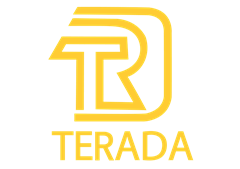What is Rigging Hardware and How is It Rated?

Many industries face the challenge of safely moving heavy objects. For some, it's as simple as stacking products on shipping pallets and moving them with a forklift. For others, heavy and irregularly shaped objects must be lifted and moved over considerable vertical and horizontal distances by specialized equipment, including cranes and hoists. They use a variety of rigging and lifting hardware to facilitate efficient and most importantly safe overhead lifting.
Rigging hardware is the equipment used to secure, lift and suspend loads. Rigging itself is the chains, ropes, and cables that bind or lift items. If you are a sailor, you will be familiar with the rigging used to set and stow sails, as well as the associated hardware including blocks, shackles, and winches. In a lifting environment, rigging has a similar function, except that it is usually where equipment, machinery, and building materials are hoisted.
Rigging hardware is the equipment that attaches rigging to a load and combines it into a system that can safely support heavy objects. It includes turnbuckles, shackles, eyebolts and nuts, yokes and clevis ends, and more.
What is the difference between lifting and rigging hardware?
The terms "lifting hardware" and "rigging hardware" are often used interchangeably, however, while lifting hardware may be referred to as rigging, not all rigging can be used for lifting. It doesn't matter what you call the device in question, as long as it's clear to everyone; the term is used differently across industries and manufacturers. However, it can be useful to use precise terminology.
Rigging hardware specifically refers to equipment used with rigging, i.e. ropes, cables, and chains used to lift and suspend objects. Rigging hardware is often used to attach rigging to objects being lifted. For example, to lift a piece of heavy equipment, you might use a crane to provide mechanical power, rigging to lift and suspend the load, and rigging hardware such as eyebolts and nuts to attach the rigging to the equipment.
How is rigging hardware rated?
When choosing rigging hardware, you must ensure that it can support the weight of your load. There are obvious security implications if you choose hardware that is not suitable for the task. Every piece of hardware, from cranes and chains to shackles and slings, should be selected to minimize the risk of failure.
Rigging hardware is usually rated at a Working Load Limit (WLL) or Rated Capacity (RC), which can also be expressed as a Safe Working Load (SWL) or Normal Rated Load (NRL) number. However, SWL and NRL have been largely replaced by less explicit workload limits. Manufacturers design and manufacture devices to support specific WLLs. The maximum workload for each device should be clearly displayed in the product catalog.
WLL is a calculated value that takes into account the minimum damage load and safety factor of the hardware. The minimum breaking load (MBL) is the load at which the hardware is expected to break, deform, or weaken significantly. The calculation method to determine the WLL is:
WLL = MBL/SF
If the eyebolt has a design MBL of 1000 lbs and a safety factor of 4, the working load limit is 250 lbs. For lifting equipment, the safety factor is usually between 4 and 6, but it can be higher or lower depending on the component and the environment. When using rigging hardware for overhead lifts, be sure not to exceed the WLL.
It should be noted that the WLL is calculated for a specific range of conditions and usage. For example, eyebolts are rated for lift force, where the force is applied to the axis of the bolt at a 0°angle. If the lift force is applied at a greater angle, the rated capacity is significantly reduced. The rated capacity also assumes that the components are installed according to the manufacturer's guidelines and used within the specified temperature range.
If you are looking for more information on rigging and lifting hardware, or have questions about a specific product, please contact us.
Terada Hardware is a professional custom wire ropes and accessories manufacturer. We offer a full range of hardware. Our accessories are widely used in shading structures, tensile structures, fabric stretching, wire railings, railing systems, railing systems, marine, lifting, and other industries. We treat our customers as part of the team and support as partners. For non-standard hardware. We listen carefully to customers' requirements and provide some professional advice and technical support. Follow the new designs to make the most suitable hardware for your project.


 TERADA HARDWARE
TERADA HARDWARE

